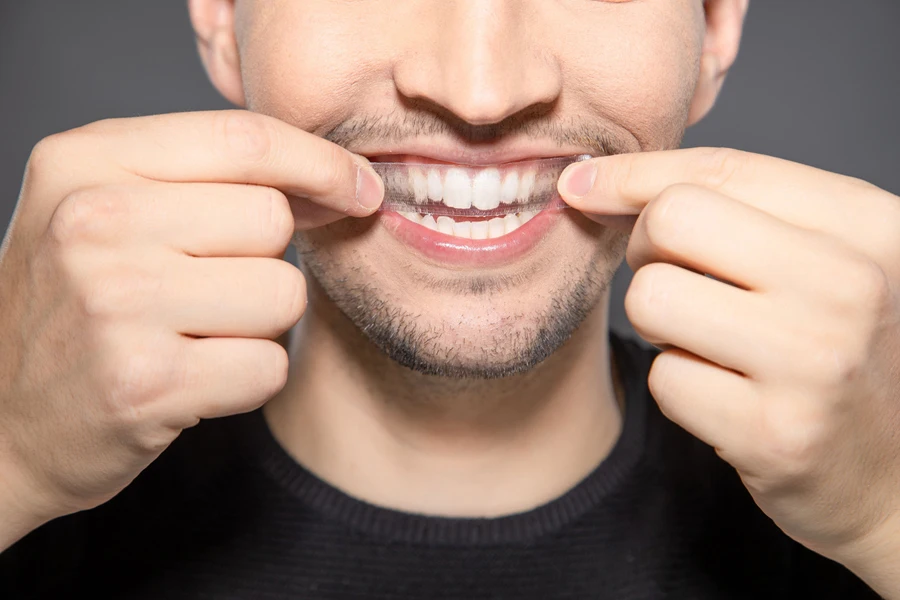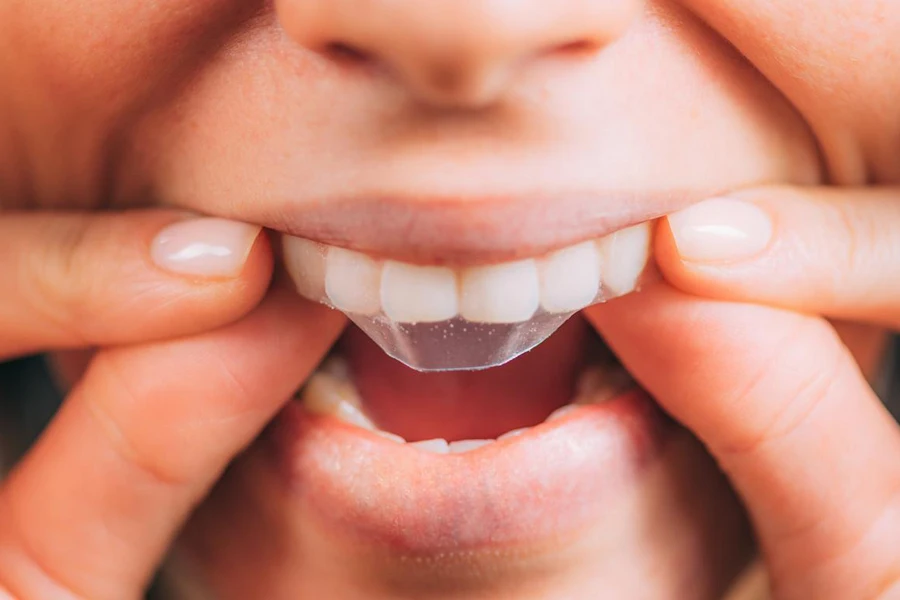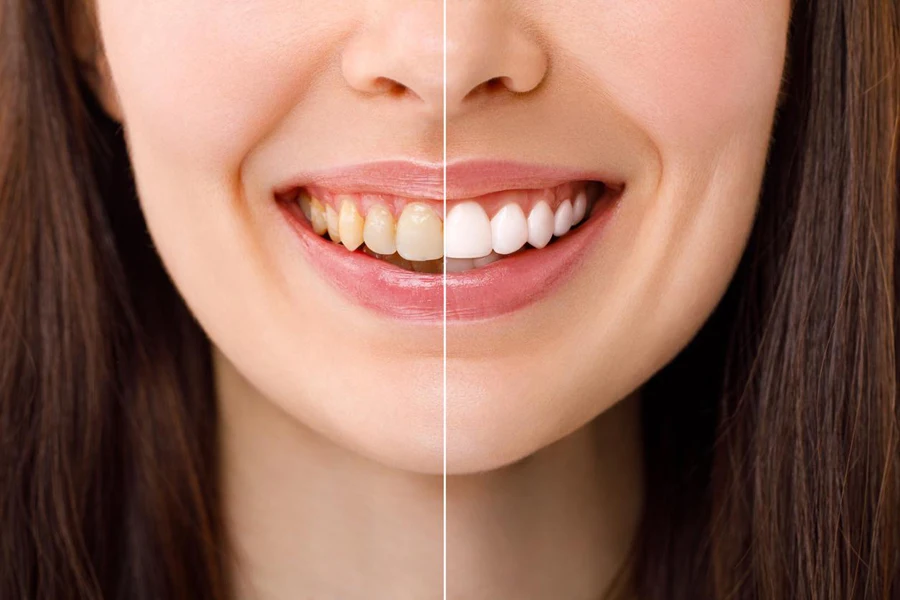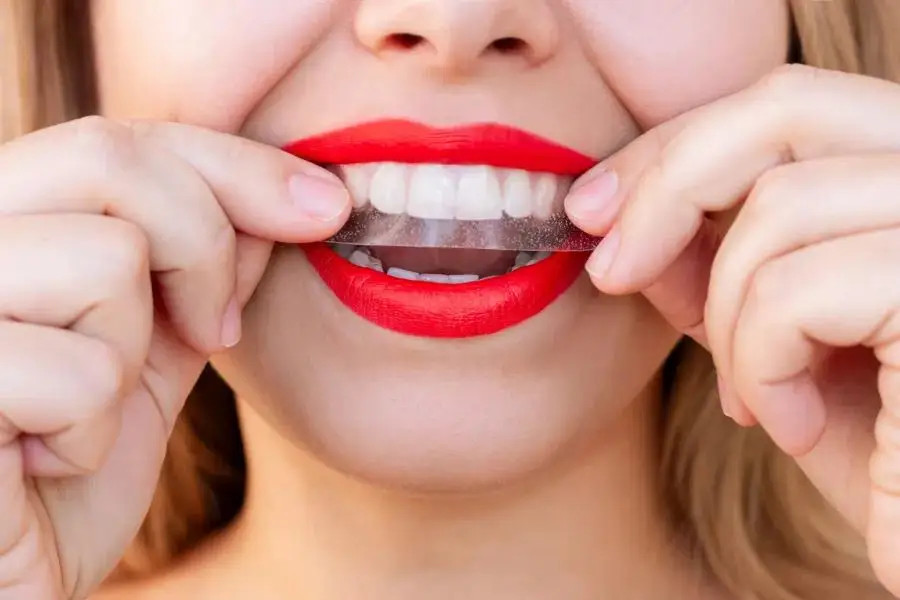Table of Contents
1. Introduction
2. Key types of teeth whitening strips
3. Current market trends for teeth whitening strips in 2025
4. Essential factors to consider when selecting teeth whitening strips
5. Top products and their standout features
6. Conclusion
Introduction
Teeth whitening strips have become quite popular for enhancing one’s smile by providing an effective solution without needing professional dental treatment. They are flexible strips coated with a whitening substance typically containing peroxide that sticks to the teeth and effectively removes stains and discoloration. As of 2025, the demand for these strips has increased significantly as they appeal to a wide group of individuals looking for improvements quickly. They are highly appreciated for their user-friendly nature, reasonable cost, and various choices available to cater to multiple requirements.

Key types of teeth whitening strips
Peroxide-based vs. Non-peroxide strips
Peroxide-based strips usually contain hydrogen peroxide or carbamide peroxide as their component for whitening teeth and removing deep-seated stains and discoloration within the enamel of the teeth. Hydrogen peroxide is considered a good choice as it can deeply penetrate the tooth enamel to target stains; however, its strong effects may result in tooth sensitivity and gum irritation if used excessively or not per the recommended usage instructions. Carbamide peroxide is a slower-acting alternative commonly found in at-home kits due to its stability over longer periods. While effective, carbamide peroxide requires longer treatment durations than hydrogen peroxide, making it ideal for gradual results in at-home treatments.
In contrast, non-peroxide strips have gained popularity recently, especially among individuals concerned about sensitivity. These whitening strips usually use sodium bicarbonate or phthalimidoperoxycaproic acid to brighten teeth. They are generally milder and less likely to irritate peroxide-based strips; however, they may not yield the same results as peroxide-based products. PAP, in particular, has been highlighted for its desensitizing properties and effectiveness in reducing discoloration without harming tooth enamel.
Strips for sensitive teeth
Selecting the right teeth whitening strip is crucial for those with sensitive teeth. Peroxide-based strips, though effective, often exacerbate sensitivity issues. Many brands now offer specialized versions designed to minimize this discomfort. For example, Crest 3D Whitestrips Sensitive contains a lower concentration of peroxide, allowing for gentler, yet still effective, whitening over a longer period. These strips also use an enamel-safe formula to prevent further damage.
On the other hand, non-peroxide strips are a preferred option for individuals with severe sensitivity. Hismiles PAP+ plus Whitening Strips are designed with non-peroxide components to cater to individuals seeking a sensitivity-free option. Moreover, these strips frequently contain remineralizing substances such as hydroxyapatite that whiten and fortify the enamel.
Express whitening strips for quick results
For those seeking immediate results, express whitening strips offer a fast solution. These products typically use higher concentrations of hydrogen peroxide to deliver noticeable whitening in a short time frame. For instance, some express strips can provide visible results in just one or two uses, making them ideal for individuals preparing for special occasions. However, the rapid whitening effect can come with a trade-off in terms of increased sensitivity. Therefore, express strips should be used cautiously and as directed.

Current market trends for teeth whitening strips in 2025
Growing demand for at-home cosmetic treatments
According to Market Research Engine experts, the global market for teeth whitening strips is estimated to be worth around USD 9 billion. It is forecasted to reach USD 12 billion by 2028. This growth is anticipated at about 4% from 2023 to 2028 due to the growing popularity of easy-to-use home whitening products and a greater focus on dental aesthetics.
The change is driven by a growing movement towards self-care practices among customers who choose OTC items that provide quality outcomes without requiring visits to dental offices. Whitening strips have become a part of individuals’ oral care regimens because of this trend of swift growth in regions such as Europe and Asia Pacific, influenced by rising disposable incomes and improved knowledge about oral health.
Key innovations: biodegradable strips and reduced-sensitivity formulas
In 2025, there is advancements in teeth whitening technology as companies introduce products to combat the typical problems linked with traditional whitening strips. An emerging trend is the creation of eco-whitening strips that are biodegradable in response to increasing environmental worries. These strips are designed to decompose quickly, providing a sustainable choice for consumers who care about the planet.
The introduction of milder formulas has recently impacted the field. Many people find peroxide-based teeth whitening products uncomfortable since they can lead to sensitive teeth or irritated gums. Companies are developing solutions that use desensitizing components such as potassium nitrate and hydroxyapatite to address this issue. These advancements ensure effective whitening while protecting tooth enamel, making the products suitable for individuals with sensitivity concerns. The rise of peroxide-free options, such as PAP-based strips, has also been a major innovation in this space, further broadening the market.

Essential factors to consider when selecting teeth whitening strips
Duration of treatment and visible results
The time needed for teeth whitening strips may differ depending on the product and the teeth’ stained. Strips that usually contain hydrogen peroxide yield results between 1 and 2 weeks of using them for around 30 minutes daily. Some express options provide faster results, delivering noticeable improvements in as little as one day. However, more prolonged treatment may be needed for deeper or intrinsic stains to achieve the desired whitening effect. Adhering to the recommended usage is essential for maximizing results without overexposing teeth to the bleaching agents.
Sensitivity concerns and safety certifications
Whitening strips reach the tooth enamel to eliminate stains; however, this process can temporarily weaken the enamel and heighten sensitivity. For individuals with sensitive teeth, choosing products with low peroxide levels or considering alternatives, like PAP, that aim to reduce irritation while delivering effective whitening results is advisable. Choosing teeth whitening strips that have received approval from organizations guarantees that the product has been subjected to safety assessments and provides reassurance regarding its suitability for sensitive teeth or gums. Properly applying them, including avoiding gum contact, also helps minimize irritation.

Top models and their standout features
When evaluating the best-selling teeth whitening strips, several types emerge as market leaders, largely due to shared characteristics that make them both effective and popular among a broad range of consumers.
Strips for sensitive teeth
Teeth whitening strips specifically designed for sensitive teeth have gained considerable attention. Typically, these items have low levels of hydrogen peroxide or other active substances, like PAP, that provide whitening effects without causing sensitivity issues. They are designed to be gentle on the enamel and may include desensitizing agents such as potassium nitrate to reduce discomfort while achieving whitening benefits. The balance between effectiveness and comfort makes them a top choice for individuals with sensitivity concerns, allowing a broader market segment to enjoy teeth whitening without fear of irritation or pain.
Express whitening strips
Another category that continues to perform well is express whitening strips, which promise rapid results in a short period, often in just one or two applications. These strips typically contain a higher concentration of hydrogen peroxide, allowing users to achieve visibly whiter teeth in as little as a day. This quick treatment option makes them ideal for individuals seeking immediate improvements for special events or occasions. Despite their fast action, express strips are designed to minimize sensitivity, a common concern with such potent formulations.

Eco-friendly and biodegradable strips
There has been a growing demand for eco-friendly alternatives in the teeth whitening industry in recent years. Biodegradable strips made from plant-based materials offer a more sustainable option, addressing environmental concerns associated with traditional plastic strips. These products still feature effective whitening agents but are designed to decompose more quickly, reducing the environmental impact. Their popularity reflects the broader consumer shift toward sustainability and responsible consumption, making them a leading category in today’s market.
Strips with additional oral care benefits
Many modern whitening strips go beyond cosmetic benefits, offering added features like enamel strengthening or plaque removal. Products containing ingredients designed to enhance health appeal to many because they whiten teeth and promote long-term oral hygiene benefits. This makes them popular for individuals seeking a complete dental care solution that includes whitening in their daily routine.
Conclusion
When choosing teeth whitening strips, it’s important to consider how long the treatment will take, teeth sensitivity issues, and what others say about the product. Strips designed for sensitive teeth offer a more comfortable experience, while express options cater to those seeking quick results. Eco-friendly alternatives also align with the growing demand for sustainable products, and strips with added oral care benefits provide comprehensive dental solutions. These diverse options ensure that consumers can find a product that meets their whitening needs while maintaining safety and effectiveness.




